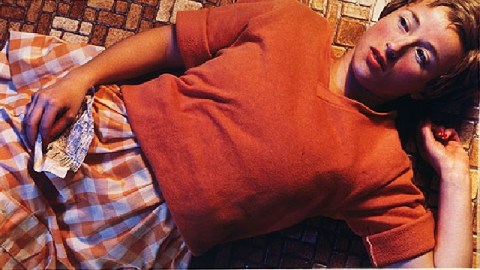Why Are Art Collectors Still Shortchanging Women Artists?

It’s no new news that the art world remains a man’s world for the most part, but that the situation’s getting better. Cindy Sherman’s major retrospective exhibition Cindy Sherman, which closes its run at the MOMA on June 11th (and which I wrote about here), is a clear sign that museums are finally coming around to the idea of featuring female artists on the same scale as they’ve always featured male artists. But even a woman as officially canonized as Sherman cannot command the same auction prices as men. Her Untitled #96 (from 1981, shown above) went for nearly $4 million USD, which is nothing to scoff at, but isn’t even one fifth of what Jeff Koons was able to get for his Balloon Flower. As a recent article in The Economist showed all too clearly, art collectors are spending bigger than ever before on post-World War II artists, but just not on post-World War II female artists. Why are art collectors still shortchanging women artists?
Museums haven’t always been as gender equal as they are today, not that all museums are gender equal. The Guerrilla Girls, the gender-conscious conscience of the art world, pointed out in a 1989 poster that only 5% of the artists in the collection of the Metropolitan Museum of Art were women, while 85% of the nudes were of female anatomy. When they did a “recount” in a 2007 poster, the number of female nudes went down slightly to 83%, but, amazingly, the percentage of women collected went down, too, to an embarrassing 3%. The Met, like all good encyclopedic museums, collects the history of art, so their collection will naturally reflect the misogyny of that history, although a greater effort to correct the oversights of the past with today’s hindsight would be greatly appreciated. Fortunately, The New Museum, founded in 1977 by Marcia Tucker (after her dismissal from The Whitney Museum of American Art), not only promotes the best in contemporary art, but goes above and beyond the call of duty in featuring female artists. As I write, The New Museum hosts (as LeBron James would say) not one, not two, not three, not four, but five exhibitions of women artists. As times have changed and museums with contemporary collections have kept pace, things have gotten better and should continue in that direction.
But when the art market seemed to lose its mind this past May in a frenzy of irrational exuberance, collectors screamed for Munch to the tune of $119.9 million USD, but made nary a peep for women artists. Granted, Edvard Munch is pre-WWII and The Scream is “the modern Mona” in many ways, but when so much cash is being thrown into the market, why is it still so much of a man’s man’s world? As The Economist article points out, when Christie’s sold $388 million USD of post-war and contemporary art in one night, women artists were outnumbered by men at a factor of 5-to-1 (which is actually a good number at such sales) and sales of their work accounted for less than 5% of the total, record amount. A picture by Yves Klein of two naked women drew a price double that of all the works by women combined. “Indeed,” the author of the article adds, “depictions of women often command the highest prices, whereas works by them do not.” With all due respect to Yves Klein, he’s no Cindy Sherman—except when it comes to monetary recognition.
It’s troubling that the same problem regarding female artists versus female nudes that the Guerrila Girls have documented at the Met exists in auction houses for more recent artwork and artists. “Attitudes are changing generationally,” offers Amy Cappellazzo, chairperson for post-war and contemporary art development at Christie’s, in the article. “It wasn’t long ago that it was hard to be taken seriously as a woman artist. There will be some remedial catch up before women artists have parity on prices.” Perhaps it is a generational problem, a case of old money continuing the old boy network of spending for art by men. The gender gap, however, is cavernous. Presently, Mark Rothko’s Orange, Red, Yellow holds the post-WWII record at $86.9 million USD, while the $10.7 million paid for Louise Bourgeois’ Spider remains the most paid for any work by any woman ever.
Bourgeois may be the most important sculptor—male or female—of the last half century. Did she break double digit millions solely because of that? I’d like to think so, but I think a few other factors were in play. Bourgeois died less than a year before the record sale—the inevitable “death” bump. Confessional, dramatic art sells, as proven by Rothko. Finally, and maybe most importantly, Bourgeois’ Spider is big and bold—a giant arachnid with creepy maternal overtones. Big and bold sells, usually because big and bold means manly. Do women artists need to make manly art to find equality in museums and auction houses? Maybe this inequality is a generational thing, but how many generations will it take?
[Image:Cindy Sherman. Untitled #96, 1981.]





